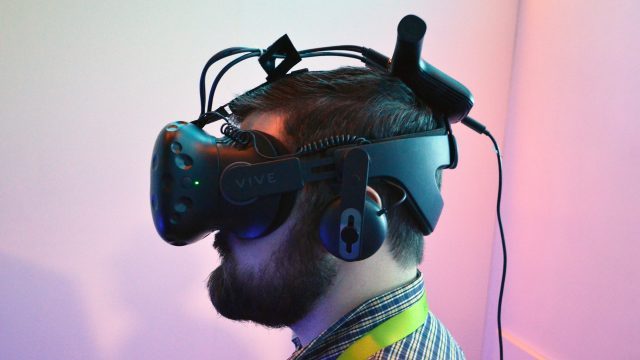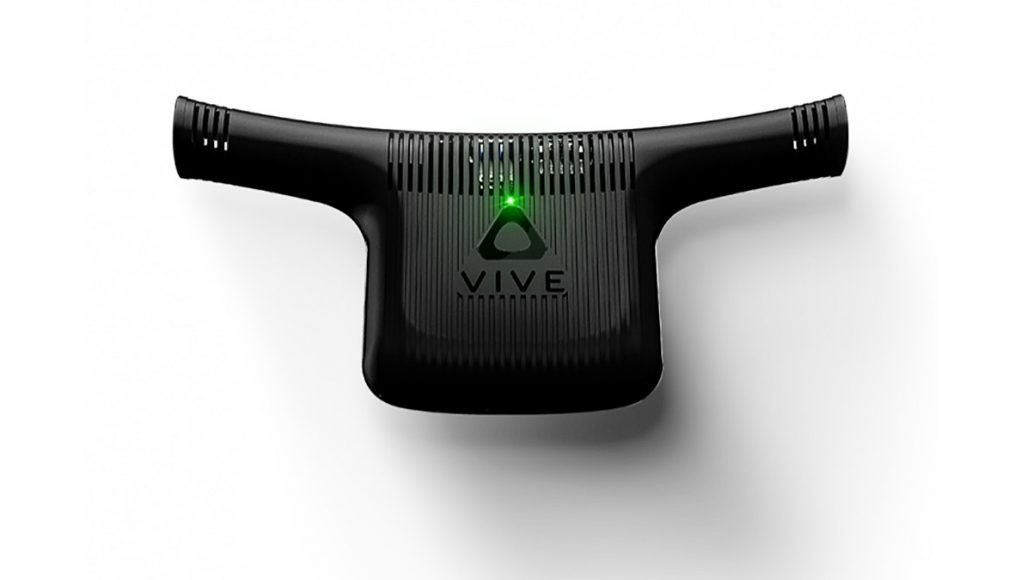The Vive Wireless Adapter, a first-party wireless add-on for the Vive and Vive Pro, is finally here after its initial announcement way back in January. Priced at $300, the Vive Wireless Adapter is now available starting today.
Update (September 24th, 2018): HTC has today officially launched the Vive Wireless Adapter, which is priced at $300/€345/£300. Vive Pro users should note that the Vive Pro adapter kit is an additional $60/€75/£65. The original article follows below.
Original Article (August 21st, 2018): The Vive Wireless Adapter is built on Intel’s 60GHz WiGig technology, with DisplayLink’s XR codec which is designed for low latency video transmission. The adapter itself, which mounts atop the head, is paired with a pocketable battery pack to power the headset and receiver, as well as a separate transmitter device which connects to the PC and is ideally mounted up high and facing to the user to maintain direct line of sight with the receiver.

We’ve seen many attempts at wireless VR adapters over the last year, and came away impressed in our latest hands-on with the Vive Wireless Adapter back at E3 in June.
In addition to no noticeable latency, the system was also very robust in my demo—I didn’t see a single frame drop, tracking issue, or any other major artifact from the Vive Wireless Adapter, which bodes well for consistent performance. The only artifact I was able to spot was a slight blockiness in the view when quickly rotating my head back and forth, but I had to look very carefully for this and I think it will go unnoticed by the vast majority of users.
I’m still interested to see how the Vive Wireless Adapter holds up in more challenging situations (highly active games, scenes which are more difficult for compression, etc), but from my experiences thus far, it appears to be shaping up to be a promising wireless solution, even for the higher resolution of the Vive Pro.
HTC today announced the Vive Wireless Adapter release date for September 24th, priced at $300. Pre-orders start on September 5th. The company is also throwing in a two month trial to Viveport Subscription as part of the purchase.
While the Vive Wireless Adapter works for both the original Vive and the Vive Pro, interestingly, customers with the Pro will need to shell out for a $60 ‘compatibility pack’ which includes “a connection cable for the Vive Pro, as well as foam padding and an attachment device unique to Vive Pro.” That’s surprising, as we expect that the $300 accessory will appeal more to businesses using the Vive Pro in enterprise and commercial settings rather than regular in-home users who would be more likely to own the original Vive.
The $300 price point matches the only other wireless VR solution that’s widely available to consumers, the TPCAST adapter, which has models for both the Vive and the Rift.
The announcement confirms that the Vive Wireless Adapter transmitter requires a connection to an internal PCI-E port, which means that anyone hoping to use the adapter with a laptop is out of luck. HTC says the transmitter’s range is up to six meters, with a 150 degree field of view. As 60GHz is a high-frequency band compared other wireless technologies, it doesn’t penetrate walls or other objects very well, and consistent line of sight to the transmitter is necessary for an uninterrupted experience.
We’re still waiting on some additional info, which we hope to see ahead of the September 5th pre-order opening, like how many Vive Wireless Adapters can be used in proximity to one another without interference.







